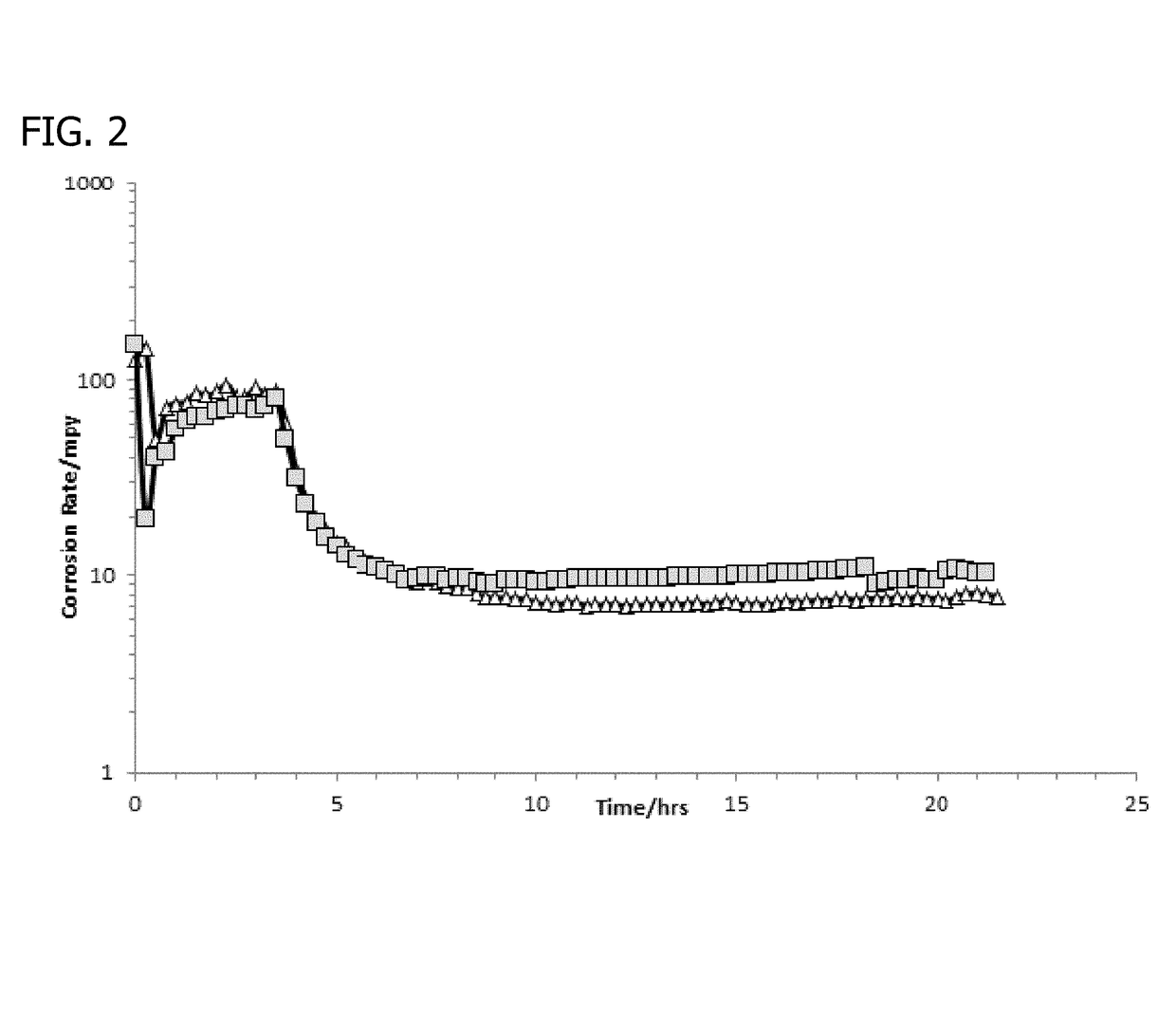Composition for remediating iron sulfide in oilfield production systems
a technology of oilfield production system and iron sulfide, which is applied in the direction of surface-active detergent composition, detergent composition, detergent composition, etc., can solve the problems of loss of revenue and/or equipment failure, inefficiency of separation process, and significant problems
- Summary
- Abstract
- Description
- Claims
- Application Information
AI Technical Summary
Benefits of technology
Problems solved by technology
Method used
Image
Examples
examples
[0150]The following non-limiting examples are provided to further illustrate the invention.
examples 1-15
sion Inhibitor Compositions
[0151]Table 1 summarizes exemplary compositions of the invention. The raw materials are commercially available.
[0152]The compositions of Table 1 can be prepared by adding sodium gluconate to distilled water to form a solution. A mixture of benzyl dimethyl C12-C18 alkyl ammonium chloride, a bis-quaternized compound and 2-mercaptoethanol can be combined with the solution, and then another solvent can be added with shaking to form the composition. The compositions can be visually inspected after a three week period to determine whether any precipitation, flocculation or phase separation occurred at room temperature.
[0153]The effect of different solvents was tested in Examples 6 to 11. Each of these examples was prepared with the same amount of iron sulfide dissolver, solvent and corrosion inhibitor / sulfur-containing compound, but the solvent species were varied. The variation in solvents did not impact the stability of the formulation, and the observations ar...
example 16
y Evaluation Via Bubble Test
[0155]Sodium gluconate was evaluated for corrosion performance as compared to THPS via a bubble test procedure. The bubble test simulates low flow areas where little or no mixing of water and oil occurs. The test was conducted using 100% synthetic brine. The brine was placed into kettles and purged with carbon dioxide. The brine was continually purged with carbon dioxide to saturate the brine prior to starting the test. After the test began, the test cell was blanketed with carbon dioxide one hour prior to electrode insertion and through the duration of the test to maintain saturation. The kettles were stirred at 150 revolutions per minute (rpm) for the duration of the test to maintain thermal equilibrium at 80° C. The corrosion rate was measured by Linear Polarization Resistance (LPR) techniques. The working electrode used was carbon steel. The counter and reference electrodes were both 1018 carbon steel. The electrodes were all cleaned and polished prio...
PUM
| Property | Measurement | Unit |
|---|---|---|
| temperature | aaaaa | aaaaa |
| temperature | aaaaa | aaaaa |
| temperature | aaaaa | aaaaa |
Abstract
Description
Claims
Application Information
 Login to View More
Login to View More - R&D
- Intellectual Property
- Life Sciences
- Materials
- Tech Scout
- Unparalleled Data Quality
- Higher Quality Content
- 60% Fewer Hallucinations
Browse by: Latest US Patents, China's latest patents, Technical Efficacy Thesaurus, Application Domain, Technology Topic, Popular Technical Reports.
© 2025 PatSnap. All rights reserved.Legal|Privacy policy|Modern Slavery Act Transparency Statement|Sitemap|About US| Contact US: help@patsnap.com



